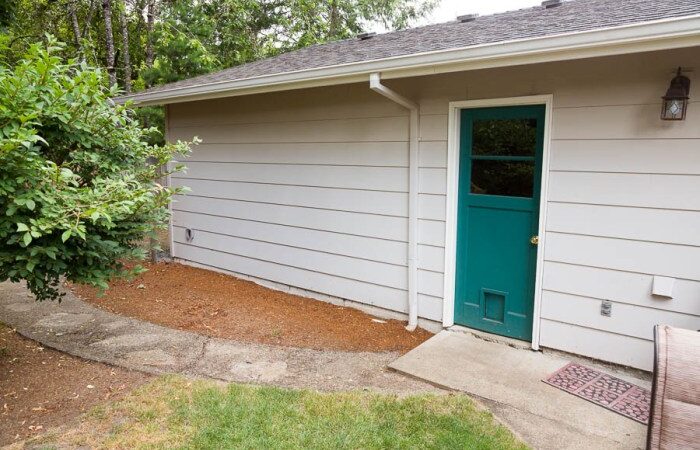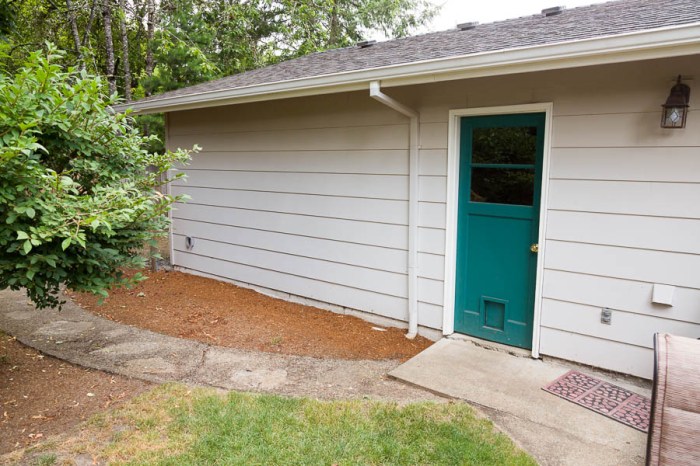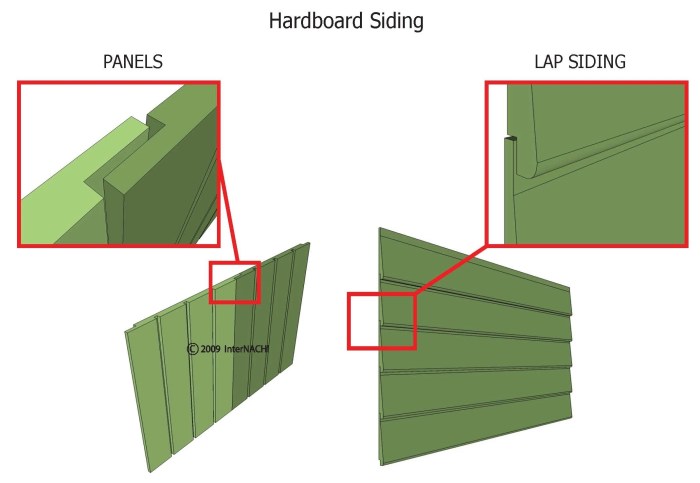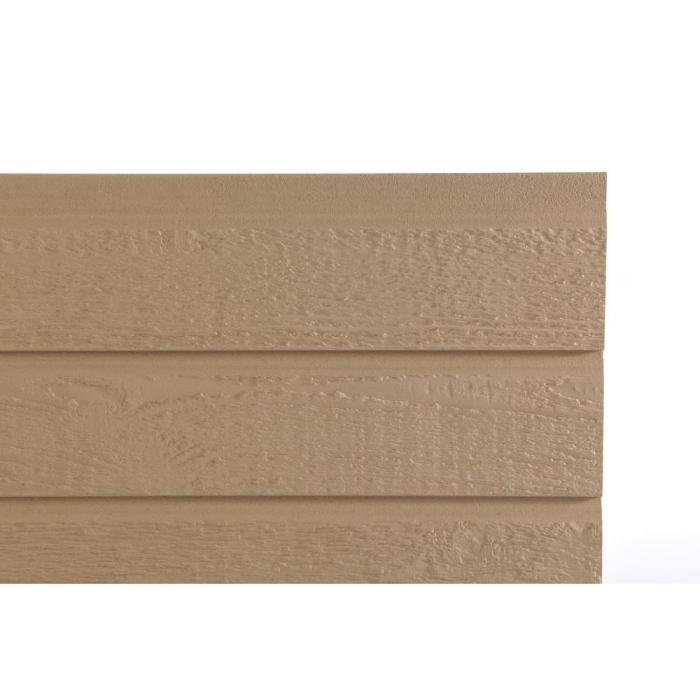Composite Hardboard Siding A Comprehensive Guide

Composite hardboard siding offers a compelling alternative to traditional siding materials. This durable and versatile option combines the aesthetic appeal of wood with enhanced resistance to moisture, insects, and decay. We’ll explore its manufacturing process, installation, maintenance, and long-term cost-effectiveness, comparing it to vinyl, wood, and fiber cement options to help you decide if it’s the right choice for your home.
Understanding the properties of composite hardboard siding is crucial for making an informed decision. This guide covers everything from its composition and manufacturing to its aesthetic versatility and environmental impact, providing you with a complete picture to aid in your home improvement project.
Product Overview

Source: imgur.com
Composite hardboard siding offers a durable and attractive alternative to traditional siding materials. It combines the benefits of wood and other materials, resulting in a product that’s relatively low-maintenance and visually appealing. Let’s delve into the details.
Manufacturing Process of Composite Hardboard Siding
Composite hardboard siding is manufactured through a process that involves combining wood fibers, resins, and other additives. First, wood fibers are harvested and processed into a pulp. This pulp is then mixed with various resins, waxes, and other chemicals to bind the fibers together and enhance the product’s properties, such as water resistance and durability. The mixture is then formed into sheets under high pressure and heat. These sheets are then cut and shaped into siding panels, which may undergo additional treatments like painting or texturing before being ready for installation.
Composition of Composite Hardboard Siding
Typically, composite hardboard siding consists primarily of wood fibers (often recycled wood), which form the structural base. These fibers are bound together by a blend of resins, usually synthetic polymers, that provide strength, water resistance, and dimensional stability. Additives like waxes are incorporated to further enhance water resistance and reduce swelling. Pigments and other chemicals are added to achieve the desired color and texture. The precise composition can vary depending on the manufacturer and the specific product line.
Comparison of Composite Hardboard Siding with Other Siding Materials
Composite hardboard siding offers a compelling middle ground between various other siding options. Compared to vinyl siding, it generally provides a more natural and textured look, though vinyl tends to be less expensive upfront. Against wood siding, composite hardboard requires significantly less maintenance, resisting rot, insect infestation, and warping much better than natural wood. While fiber cement siding offers excellent durability and fire resistance, composite hardboard is often lighter and easier to install. The choice depends heavily on individual preferences, budget, and the specific demands of the project.
Cost, Durability, and Maintenance Comparison of Siding Materials
| Siding Material | Cost (Relative) | Durability | Maintenance |
|---|---|---|---|
| Composite Hardboard | Medium | High (moderate susceptibility to impact damage) | Low |
| Vinyl | Low | Medium (prone to fading and impact damage) | Very Low |
| Wood | High | Medium (susceptible to rot, insects, and warping) | High |
| Fiber Cement | High | Very High (resistant to fire, rot, and insects) | Low |
Installation and Maintenance: Composite Hardboard Siding

Source: cloudinary.com
Installing composite hardboard siding is a straightforward process, but proper technique ensures a long-lasting, attractive finish. Careful preparation and attention to detail are key to avoiding common problems and maximizing the lifespan of your siding. This section provides a step-by-step guide and maintenance tips for optimal results.
Step-by-Step Installation Guide
Proper installation is crucial for the longevity and performance of your composite hardboard siding. Following these steps will help ensure a professional-looking and durable installation.
- Preparation: Begin by ensuring the underlying wall surface is clean, dry, and free from any loose debris or damaged areas. Repair any necessary structural issues before starting the siding installation. This includes filling cracks and ensuring the sheathing is properly secured.
- Framing and Flashing: Install appropriate flashing around windows, doors, and other penetrations to prevent water intrusion. Properly spaced framing is essential for consistent siding alignment and installation.
- Starter Strip: Install a starter strip along the bottom of the wall, providing a level base for the first course of siding. This strip ensures a consistent gap and prevents the bottom row from sagging.
- Siding Installation: Install the siding panels, overlapping each course according to the manufacturer’s instructions. Ensure proper alignment and spacing between panels. Use appropriate fasteners to secure the siding to the framing.
- Finishing: Once the siding is installed, install trim and accessories as needed to complete the look. Pay close attention to caulking around windows, doors, and other areas to seal any gaps and prevent water damage.
Maintenance and Cleaning Best Practices
Regular maintenance will significantly extend the life of your composite hardboard siding. Simple cleaning and occasional inspections can prevent minor issues from becoming major problems.
- Regular Cleaning: Clean your siding at least once or twice a year using a garden hose and a soft-bristled brush. For tougher stains, use a mild detergent solution and rinse thoroughly.
- Inspection: Regularly inspect your siding for any signs of damage, such as cracks, loose panels, or insect infestation. Address any issues promptly to prevent further damage.
- Caulk Maintenance: Check caulking around windows, doors, and other areas periodically. Reapply caulk as needed to maintain a watertight seal.
- Mold and Mildew Prevention: In humid climates, use a mildew-resistant cleaner as needed to prevent mold and mildew growth. Proper ventilation around the house is also crucial.
Common Installation Issues and Solutions
Several common issues can arise during installation. Knowing how to address them proactively can save time and prevent costly repairs.
- Uneven Surfaces: Uneven wall surfaces can lead to misaligned siding. Ensure the underlying wall is properly prepared and leveled before installation. Shims can be used to address minor inconsistencies.
- Improper Fastening: Using the wrong fasteners or improper fastening techniques can cause siding to loosen or damage. Always use the manufacturer-recommended fasteners and follow their installation guidelines.
- Water Intrusion: Water intrusion can cause significant damage. Ensure proper flashing is installed around all penetrations and that all gaps and seams are properly sealed with caulk.
Homeowner Installation Checklist
This checklist helps ensure a successful installation and long-term durability of your composite hardboard siding.
| Step | Completed |
|---|---|
| Surface Preparation (Clean, Dry, Repaired) | ☐ |
| Framing and Flashing Installed | ☐ |
| Starter Strip Installed | ☐ |
| Siding Panels Installed Correctly (Overlapping, Spacing) | ☐ |
| Fasteners Securely Installed | ☐ |
| Trim and Accessories Installed | ☐ |
| All Gaps and Seams Caulked | ☐ |
| Final Inspection | ☐ |
Durability and Longevity
Composite hardboard siding offers a decent lifespan, but its longevity depends significantly on several factors. Understanding these factors and potential weaknesses will help you make informed decisions about maintenance and ensure your siding lasts as long as possible. This section will explore the durability and longevity of composite hardboard siding, focusing on its resistance to various environmental stressors and common problems.
The lifespan of composite hardboard siding is influenced by a complex interplay of environmental conditions and installation quality. Harsh climates, particularly those with extreme temperature fluctuations, heavy rainfall, and intense UV radiation, will accelerate degradation. Proper installation, including appropriate flashing and sealing, is crucial in preventing moisture damage, a major contributor to premature failure.
Factors Affecting Lifespan
Several key factors significantly impact the longevity of composite hardboard siding. These factors influence the material’s resistance to wear and tear, ultimately determining its overall lifespan.
- Climate: Extreme temperatures, prolonged exposure to moisture (rain, snow, humidity), and intense sunlight (UV radiation) all contribute to degradation. For example, regions with frequent freeze-thaw cycles can cause expansion and contraction of the siding, leading to cracking and warping. Similarly, high humidity can promote fungal growth and rot.
- Exposure: Direct, prolonged sun exposure accelerates UV degradation, leading to fading and weakening of the siding’s surface. Areas with significant wind exposure might experience more impact damage from debris.
- Installation Quality: Improper installation, including inadequate flashing around windows and doors, can lead to water penetration, resulting in rot, mold, and structural damage. Similarly, using incorrect fasteners or failing to properly seal joints can compromise the siding’s integrity.
Potential Weaknesses and Vulnerabilities
While composite hardboard siding offers several advantages, it does have some inherent weaknesses that can affect its longevity.
- Moisture Absorption: Although treated to resist moisture, hardboard can still absorb water, especially if damaged or improperly installed. This absorbed moisture can lead to swelling, warping, and eventually rot.
- Impact Resistance: Compared to some other siding materials like vinyl or fiber cement, composite hardboard has lower impact resistance. A significant impact, such as a falling branch or a hard-thrown object, can cause dents or cracks.
- UV Degradation: Prolonged exposure to UV radiation can cause fading and discoloration, reducing the siding’s aesthetic appeal and potentially weakening its structural integrity over time.
Resistance to Damage
Let’s examine the resistance of composite hardboard siding to specific types of damage.
| Damage Type | Resistance Level | Notes |
|---|---|---|
| Impact | Moderate | Susceptible to dents and cracks from significant impacts. |
| Moisture | Moderate to Good (depending on installation and treatment) | Proper sealing and installation are crucial to prevent water damage. |
| UV Damage | Moderate | Fading and discoloration can occur with prolonged sun exposure. |
Potential Problems and Solutions
Addressing potential problems proactively can significantly extend the lifespan of your composite hardboard siding.
- Problem: Water damage leading to rot and mold. Solution: Ensure proper installation with adequate flashing and sealing. Address any leaks promptly. Regular inspection for signs of moisture penetration.
- Problem: Fading and discoloration due to UV exposure. Solution: Consider using a higher-quality siding with better UV resistance. Regular cleaning can help maintain the appearance.
- Problem: Impact damage causing dents or cracks. Solution: Careful landscaping to minimize falling debris. Prompt repair of any damage to prevent further deterioration.
Aesthetic Considerations
Composite hardboard siding offers a surprisingly diverse range of aesthetic options, moving beyond the traditional image of siding. Its versatility allows for a wide spectrum of design choices, catering to various architectural styles and personal preferences. The ability to mimic other materials, while offering superior performance, makes it a compelling choice for homeowners seeking both beauty and durability.
Choosing the right composite hardboard siding involves considering its color and texture options to achieve the desired look for your home. The interplay of these elements with architectural style plays a crucial role in determining the overall aesthetic impact.
Color and Texture Variety
Composite hardboard siding comes in a broad palette of colors, from classic neutrals like white, beige, and gray to more vibrant shades. Many manufacturers offer a wide range of earth tones, mimicking natural wood grains, and bolder colors to create a modern and striking façade. Textures also vary significantly, ranging from smooth finishes to those that replicate the look and feel of wood grain, stucco, or even stone. This allows for a high degree of customization to match existing architectural details or to create a unique visual statement. For instance, a deep charcoal gray with a wood grain texture can create a sophisticated and contemporary feel, while a warm beige with a smooth finish might be better suited for a more traditional style home.
Composite Hardboard Siding in Different Architectural Styles
The adaptability of composite hardboard siding makes it suitable for a variety of architectural styles. A classic Victorian home could be beautifully complemented by siding in a deep, rich brown with a wood grain texture, mimicking the original wood siding but with improved longevity and low-maintenance characteristics. A modern farmhouse style could benefit from a clean, white siding with a smooth finish, emphasizing the simplicity and elegance of the design. For a Craftsman-style home, a warm, earthy tone with a subtle texture could create a harmonious blend with natural surroundings. Conversely, a contemporary home might look stunning with sleek, dark gray siding that creates a bold, modern statement.
Visual Representation of Siding Applications
Imagine a charming Cape Cod-style home clad in creamy white composite hardboard siding with a subtle wood grain texture. The soft color and realistic texture complement the home’s traditional design, creating a welcoming and timeless appeal. Contrast this with a sleek, modern ranch-style home featuring deep gray siding with a smooth, contemporary finish. The dark color creates a striking contrast against the home’s clean lines and large windows, highlighting its minimalist aesthetic. A Tudor-style home, with its intricate detailing, might be enhanced by siding in a warm, earthy brown with a slightly textured finish that mimics the look of aged stone, creating a cohesive and sophisticated appearance. Finally, picture a rustic farmhouse, its exterior enhanced by composite hardboard siding in a light gray with a wood grain texture, blending seamlessly with the surrounding landscape. The slightly rough texture adds a touch of rustic charm while maintaining a clean and contemporary feel.
Environmental Impact

Source: home depot-static.com
Choosing any building material involves considering its environmental footprint. Composite hardboard siding, while offering many advantages, has an impact on the environment throughout its lifecycle, from raw material sourcing to disposal. Understanding this impact allows for informed decision-making and helps in choosing the most sustainable option.
Composite hardboard siding manufacturing uses wood fiber, often sourced from sustainably managed forest and resin binders. The manufacturing process itself consumes energy and generates waste. The transportation of materials and finished products also contributes to the overall carbon footprint. However, compared to some other siding materials, composite hardboard can offer a more environmentally friendly alternative, depending on specific manufacturing processes and sourcing.
Manufacturing Process and Emissions
The manufacturing of composite hardboard siding involves several stages that contribute to its environmental impact. The harvesting of wood fiber, while potentially sustainable with responsible forestry practices, still releases carbon dioxide. The production of resin binders, often petroleum-based, is energy-intensive and generates greenhouse gas emissions. The manufacturing process itself involves energy use for pressing, curing, and finishing the hardboard, further adding to its carbon footprint. Finally, waste generated during manufacturing needs to be managed responsibly to minimize its environmental impact. Companies are increasingly adopting more efficient manufacturing techniques and using renewable energy sources to reduce their environmental footprint. For example, a company might use solar power to run part of its manufacturing plant, thus lowering its reliance on fossil fuels.
Comparison with Other Siding Options
Compared to other siding options, composite hardboard’s environmental impact varies. For example, vinyl siding, while durable and low-maintenance, is derived from petroleum and is not easily recyclable. Wood siding, while a renewable resource, requires significant amounts of energy for processing and transportation, and is susceptible to rot and insect damage, potentially requiring frequent replacement. Metal siding, while recyclable, has a high embodied energy due to the energy-intensive manufacturing process. The overall environmental impact needs to be assessed on a case-by-case basis, considering factors such as material sourcing, manufacturing processes, transportation distances, and product lifespan. Life cycle assessments (LCAs) are often used to compare the environmental impacts of different siding options.
Recyclability and Disposal
The recyclability of composite hardboard siding is currently limited. While some manufacturers are exploring recycling options, widespread recycling infrastructure for this material is not yet established. Disposal methods typically involve landfill disposal, which can contribute to greenhouse gas emissions and environmental pollution. However, the material itself does not leach harmful chemicals into the soil, unlike some other materials. Proper disposal by local regulations is essential. Some companies are actively working on developing closed-loop recycling systems for their products, aiming to reclaim and reuse materials from discarded siding. This would significantly reduce the environmental impact associated with disposal.
Sustainable Sourcing Practices
Sustainable sourcing practices play a crucial role in minimizing the environmental impact of composite hardboard siding. Using wood fiber from certified sustainably managed forests, such as those certified by the Forest Stewardship Council (FSC), ensures responsible forestry practices that minimize deforestation and habitat loss. Furthermore, using recycled wood fiber in the production process reduces reliance on virgin timber and minimizes the overall environmental footprint. Companies committed to sustainability also invest in energy-efficient manufacturing processes and strive to reduce waste generation throughout the production cycle. Choosing siding from manufacturers with clear sustainability commitments is essential for environmentally conscious consumers. Transparency in sourcing and manufacturing processes is key to verifying the environmental claims made by manufacturers.
Cost Analysis
Let’s get down to brass tacks: how much will composite hardboard siding cost you? The price isn’t a single number, but rather a sum of several factors that can vary significantly depending on your project. Understanding these factors is key to budgeting effectively.
Factors influencing the overall cost include the size of your house, the complexity of the installation (e.g., intricate trim work), the chosen style and color of the siding, labor costs in your region, and the quality of the materials purchased. Higher-end composite hardboard siding with enhanced features like improved durability or unique textures will naturally command a higher price. Similarly, a larger house will require more materials and labor, thus increasing the overall expense.
Purchase Costs
The cost of the composite hardboard siding itself is a significant portion of the total project expense. Prices are typically quoted per square foot and vary depending on the manufacturer, the thickness of the boards, and the specific features included. You should expect to pay anywhere from $5 to $15 per square foot, depending on these factors. Remember to factor in extra material for cuts and waste. It’s always better to have a little extra than to run a short mid-project.
Installation Costs
Labor costs are another major component. Professional installation is highly recommended for composite hardboard siding to ensure a proper and long-lasting installation. Labor costs vary widely by geographic location and the installer’s experience. You should expect to pay anywhere from $3 to $8 per square foot for professional installation, but it’s wise to get multiple quotes from reputable contractors to compare pricing. This is a significant investment, so getting a few quotes is worthwhile.
Maintenance Costs
Composite hardboard siding is relatively low-maintenance. However, periodic cleaning and occasional repairs might be necessary over the lifetime of the siding. Cleaning typically involves washing the siding with water and a mild detergent. Repair costs will depend on the nature and extent of the damage, and might involve replacing individual panels or sections. Budget a small annual amount for cleaning supplies and anticipate potential repair costs over the lifespan of the siding (this is usually quite low compared to other materials).
Long-Term Cost-Effectiveness
Compared to other siding materials, composite hardboard often presents a strong case for long-term cost-effectiveness. While the initial investment might be higher than vinyl siding, for example, composite hardboard’s superior durability and longevity translate to lower maintenance and replacement costs over the decades. Wood siding, while aesthetically pleasing, often requires more frequent painting and maintenance, which can significantly add to its long-term cost. Metal siding can be expensive upfront and may suffer from dents or scratches more easily than composite hardboard.
Sample Budget for a Typical Siding Project
Let’s consider a hypothetical 1500-square-foot house.
| Expense Category | Estimated Cost |
|---|---|
| Materials (Composite Hardboard Siding) | $7,500 – $22,500 (assuming $5-$15/sq ft) |
| Installation Labor | $4,500 – $12,000 (assuming $3-$8/sq ft) |
| Permits and Inspections | $500 – $1,000 (varies by location) |
| Contingency (for unforeseen expenses) | $1,000 – $2,000 (10-20% of total estimated cost) |
| Total Estimated Cost | $13,500 – $37,500 |
Remember that this is just a sample budget, and the actual cost will vary depending on your specific project requirements and location. Always obtain multiple quotes from contractors to get a more accurate estimate for your situation.
Final Conclusion
Ultimately, choosing the right siding depends on your budget, aesthetic preferences, and long-term goals. Composite hardboard siding presents a strong contender, offering a balance of durability, low maintenance, and visual appeal. By carefully considering the factors discussed – from installation and maintenance to environmental impact and cost – you can confidently select the siding that best suits your needs and enhances your home’s value.
Answers to Common Questions
Is composite hardboard siding prone to warping or cracking?
While less prone than wood, warping or cracking can occur with extreme temperature fluctuations or improper installation. Proper ventilation and careful installation are key to preventing these issues.
How often does composite hardboard siding need to be painted or stained?
Composite hardboard siding typically doesn’t require painting or staining, reducing maintenance needs compared to wood siding. However, cleaning is recommended periodically to maintain its appearance.
Can composite hardboard siding be installed over existing siding?
In some cases, yes, but it depends on the condition of the existing siding. A professional assessment is recommended to ensure proper installation and avoid future problems.
What is the warranty typically offered on composite hardboard siding?
Warranties vary by manufacturer, so check with your supplier for specifics. Look for warranties covering defects in materials and workmanship.
How does composite hardboard siding compare to fiber cement in terms of fire resistance?
Both offer good fire resistance, but specific ratings vary by product. Check individual product specifications for precise fire-resistance data.
Comments are closed.